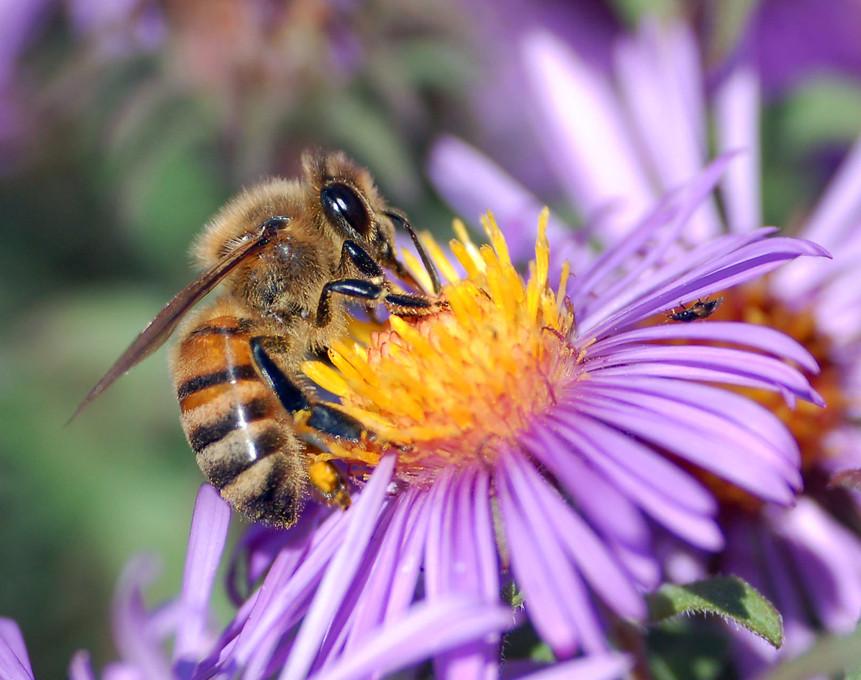
Collecting Honey Bees & Honey
Posted by Grange Co-op on 31st Jan 2016
Getting honey bees

You can fill your hive with honey bees either found in nature or by buying them. In the wild, clusters of bees are called swarms, which you can collect and introduce to your hive. As a first-time precaution, take an experienced bee keeper. Wear the appropriate protective gear if you move a swarm to your own apiary. You can find bees on tree limbs, fence posts, or other areas and you can capture them by brushing them into a container for transport. Consult your local beekeeping club or these additional resources for more advice and locations for collecting a swarm.
Buying honey bees is much easier, and safer. You can purchase bees from local beekeepers, and packages will contain a queen, workers, and a feeder filled with a food source.

“In the average hive there are 60,000 bees. During the summer they live generally about six weeks. So the queen has to keep laying eggs to keep replacing the bees,” says Hazel our beekeeping expert.
During the bee season, you may find the need to split your
hive. In spring, bees naturally want to swarm. “It’s the natural way for them to make more room in the hive so that they can carry on and spread out in the area they’re in,” says Hazel. “A beekeeper does not want to lose their bees, so a good beekeeper will manage hives by making room in the hives they have by adding more boxes on the top, and also by avoiding swarming of the bees – by dividing or splitting the hive. Take some of the bees from one hive and move them to another hive so you don’t lose production of honey. There’s nothing worse than getting your hive all the way through winter and then they swarm and fly two miles away and you’ve lost them all.”
Collecting honey
You will generally collect honey in fall, or in both spring and fall if your bees are especially productive. To collect honey, you’ll need to have the bees leave the supers which are the removable boxes inside the hive that contain honey. The most recommended method of getting bees to leave is by using a smoker, which uses harmless smoke to encourage bees to leave the hive. You can also use a safe, non-toxic product called Fischer’s Bee Quick, which is a spray containing no foul odors or chemicals. Another method is to use a bee escape board, which is a maze attached to the box so that they can’t quickly find their way back into the hive. Bee Keepers sometimes use a “Bee Brush” and also a blower to help in this process.
Once the bees are out of the hive and you’ve removed the supers, “Use a knife to cut beeswax off the top of the honey comb,” says Hazel. “You can almost scoop out the honey if you want, or you can use an extractor to get a lot more out. With an extractor, you put the frame in, turn the handle, and a centrifuge process flings honey out and drains down into the bottom, then you just tap it off into your bottle.”
For tips on what to do each month of the year to take care of your bee hive, check the Oregon State Beekeepers’ Association website at
www.orsba.org Also www.southernoregonbeekeepers.org
More Resources:
- Beekeeping: Getting Started (Video)
- Shop Grange Co-op for all your beekeeping supplies!

